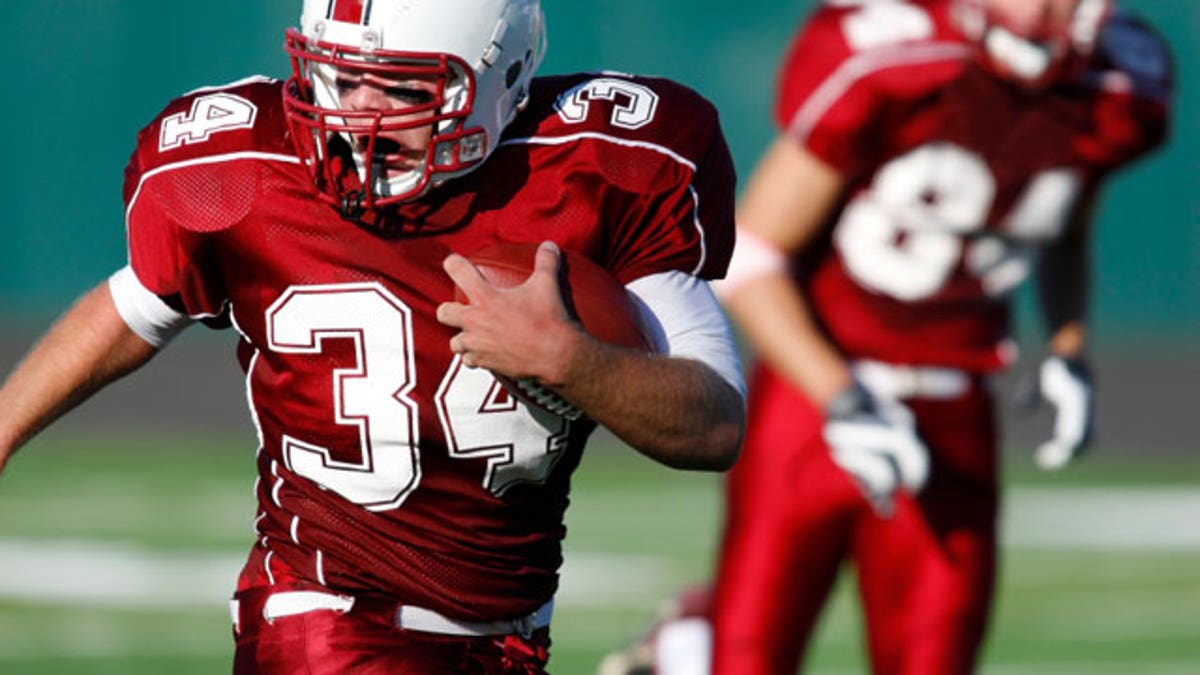
(iStock)
The time between football seasons may not be enough for players' brains to recover from hard hits to their heads during games and practices, suggests a new, small study.
Researchers discovered changes in the white matter of 10 college football players' brains after one season, compared to people who didn't play sports. After six months of not playing, the athletes' brains were still different.
"Our best guess is that it's mild brain injury - the same kind of injury that the brain would undergo after having a concussion," Dr. Jeffrey Bazarian told Reuters Health.
Bazarian is the lead author of the new study published in PLOS ONE from the University of Rochester School of Medicine and Dentistry in Rochester, New York.
He and his fellow researchers got the idea for the study after testing whether a new way to image brains could pick up the effects of concussions. They found that the brain scans of high school football players without concussions showed just as many changes as those of athletes with diagnosed concussions.
"We really wanted to see what the effect of rest was on these changes," Bazarian said. "Our thinking was that if players get a brain injury from playing football, but the injury goes away with six months of rest, maybe it's not a problem."
On the other hand, brain changes may begin to accumulate if the brain doesn't recover during the off-season. That, in theory, may contribute to the development of chronic traumatic encephalopathy (CTE).
CTE is a brain disease that's known to affect some athletes who experience repeated hits to the head. The symptoms, which tend to set in years after the last traumas, often include memory loss, aggression and dementia.
For the new study, the researchers recruited 10 college football players from the University of Rochester. Their brains were scanned at the beginning and end of the 2011 season, and again six months later.
Five non-athletes had their brains scanned for comparison.
Players' helmets were also outfitted with devices to record how many hard hits they took during the season.
None of the players experienced a concussion during the season, but they received between 431 and 1,850 head impacts each.
Compared to the non-athletes, players' brain scans showed changes in white matter at the end of the season. The extent of the changes appeared to depend on how many hits to the head the athlete had taken during the season.
White matter is the inner layer of the brain that is made up of nerve fibers, which carry messages from one part of the brain to another.
After six months of rest, the researchers found that the players still appeared to have changes to their brains.
Those changes didn't seem to influence performance, but Bazarian said it could be that a person's cognition isn't affected until the effects of multiple seasons accumulate.
"These symptoms often come long after you see neurologic changes in scanning and imaging," he said.
Also, some of the players' brains did recover by the time the next season started.
"We're really interested to know why that may be," Bazarian said, adding that it may have something to do with how certain people's bodies respond to inflammation.
He cautioned that major changes shouldn't be made based on the study's results, and he'd like to see other researchers try to replicate the findings.
Dr. Michael O'Brien, who directs the Sports Concussion Clinic at Boston Children's Hospital, agreed that the study is just an initial step, but said it was well done.
"It's useful to spark further research," O'Brien, who wasn't involved with the new study, told Reuters Health. "I would say it's not a panic button right now to say it's a smoking gun where we have to cancel all youth sports but it's food for thought."
"If you see these changes with sub-concussive collisions, you have to ask yourself, ‘Do they ever go away?' and, ‘How quickly?'" he said.
